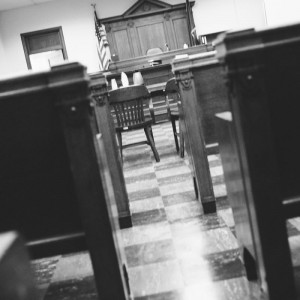When casual readers of the news media search for stories about juvenile crime and justice today, they find a lot of good news. Other than the perennial media coverage of individual crimes and victimization, an online search about juvenile justice today generates dozens of stories about states uncovering abuses in their youth corrections systems, reducing their rates of juvenile incarceration and increasing their reliance on community-based programs for young offenders.
Many of these stories refer to the ongoing decline in crime and violence as possible proof that these changes in policy and practice are improving public safety. But, a prudent reader will stop to ask about the direction of causality in these explanations. Are we reducing crime by limiting the use of incarceration, or is incarceration down because crime is down? The question is more than a topic for academic study. We need to consider our answer carefully if we hope to sustain these recent improvements over the long term.
The number of juvenile offenders being held in secure correctional institutions has been falling nationwide. Advocates in the juvenile justice field welcome this reform because reductions in the use of secure confinement allow state and local jurisdictions to intervene with young offenders in their own homes and communities, which is less costly and can be more effective than incarceration in reducing recidivism and preventing crime.
My colleague Douglas Evans and I recently reviewed the most prominent juvenile correctional reform models from the past 40 years, and we concluded that some models of reform were likely to be more sustainable than others. Specifically, we recommended the "realignment" approach now being implemented in California and those established in Wayne County (Detroit), Michigan since 2000.Read more...



 There are a few immutable functions of government—and public safety is paramount amongst them. We expect our state and local governments to use our tax dollars to keep the public peace, to punish those who do wrong, and ensure streets remain safe for prosperous economic development.
There are a few immutable functions of government—and public safety is paramount amongst them. We expect our state and local governments to use our tax dollars to keep the public peace, to punish those who do wrong, and ensure streets remain safe for prosperous economic development. The Illinois Supreme Court issued a strongly worded endorsement this week for zealous lawyering for kids—the same kind of zealous lawyering that adults routinely expect for themselves. In In
The Illinois Supreme Court issued a strongly worded endorsement this week for zealous lawyering for kids—the same kind of zealous lawyering that adults routinely expect for themselves. In In  Parts of Chicago and surrounding suburbs are taking steps to reduce the number of youths who cycle through the doors of the state juvenile lockups.
Parts of Chicago and surrounding suburbs are taking steps to reduce the number of youths who cycle through the doors of the state juvenile lockups.
 Enrolling disadvantaged teens in pro-social activities may greatly decrease violent crime arrests and increase graduation rates, according to a new study by the
Enrolling disadvantaged teens in pro-social activities may greatly decrease violent crime arrests and increase graduation rates, according to a new study by the  Unique circumstances sometimes underlie juvenile delinquency cases. In order to properly handle those cases and prevent further wrongdoing, targeted approaches can specifically address those underlying circumstances in ways traditional juvenile justice systems cannot.
Unique circumstances sometimes underlie juvenile delinquency cases. In order to properly handle those cases and prevent further wrongdoing, targeted approaches can specifically address those underlying circumstances in ways traditional juvenile justice systems cannot. Over half of the youth released from Illinois state juvenile detention centers will return in three years or less. A
Over half of the youth released from Illinois state juvenile detention centers will return in three years or less. A